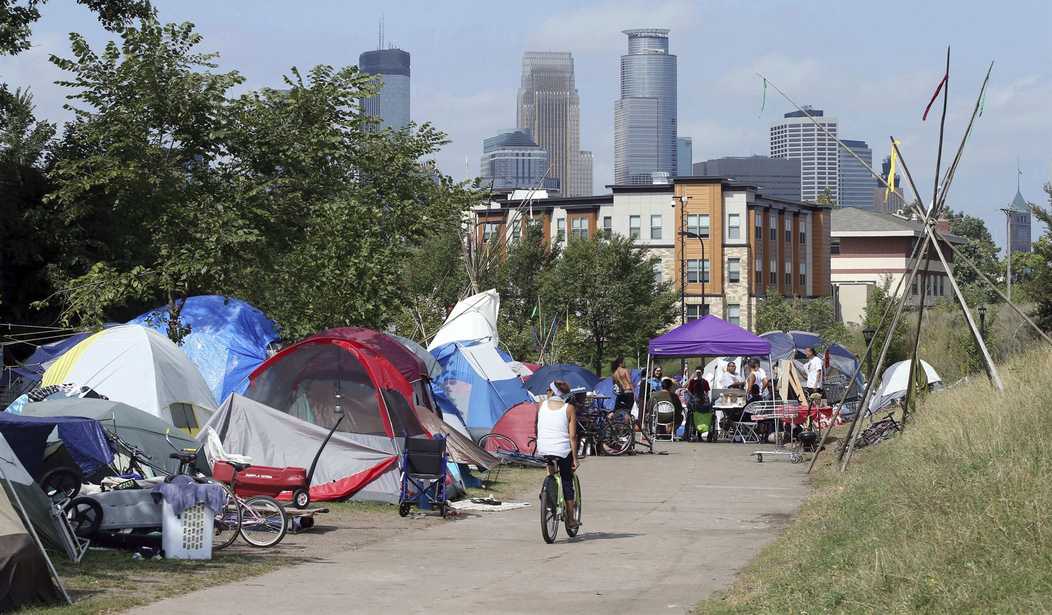The Biden administration debuted a new homelessness strategy “All In” in December 2022, including a pledge to reduce homelessness by 25 percent in two years. It was destined to fail from the start with the plan’s Housing First buttress, but the fall from grace was swifter than anticipated.
The administration recently announced the highest number of homeless recorded since the Point In Time (PIT) count began—653,000 Americans struggling with homelessness—a 12% increase in homelessness since the plan’s unveiling one year earlier.
Why? Housing First—the prioritization of housing subsidies without funding for clinical services—has proven to be a resolute failure for those struggling with homelessness.
In 2013, the Obama-Biden administration instituted Housing First as the country’s exclusive approach to homelessness. They chose to wholly defund clinical services such as mental health and substance abuse disorder counseling to go “all in” on permanent, life-long housing subsidies. They also chose to abolish requirements such as sobriety and work participation, avowing that once the homeless were stably housed, they would and could “self-determine.”
The administration promised the seismic policy shift would “end homelessness in 10 years.”
Ten years later, the number of homeless Americans has peaked, as has their death rate.
Housing First “advocates” frequently cite the pandemic as the reason for the rise in both the death rate and in homelessness overall. Yet an analysis of the Department of Housing and Urban Development (HUD)’s pre-pandemic data revealed a 20.5 percent increase in the nation’s unsheltered population under Housing First, despite it being a period of historically high economic growth. In California—the only state to fully adopt Housing First (2016)—pre-Pandemic data unveiled a 47.1 percent in the unsheltered population. The nationwide death rate amongst the homeless rose by 77 percent in the five years leading up to the pandemic.
Recommended
Undeterred by failure, the president and his cabinet doubled down on Housing First in “All In.” So while the 2023 results were fully predictable, it must have been particularly stinging to announce the marked rise in the chronically homeless population considering that it was introduced in 2008 at the federal level as an evidence-based approach specifically for the chronically homeless.
The chronically homeless, by definition, are individuals who have experienced homelessness for at least one year and who struggle with one or more disabilities. Disabilities often include the diseases of mental illness and addiction that plague 78 percent of the homeless population, whether a precursor to, or a result of, their homelessness.
The U.S. Surgeon General has labeled these diseases complex brain disorders that often result in brain disruptions that can reduce brain function. Reduced brain function, in turn, can inhibit an individual’s ability to make decisions and regulate action.
Reduced capacity for sound decision-making, in combination with the widely-known fact that diseases compound when left untreated, the consequence of the chronically homeless getting sicker and the growth in their numbers under Housing First was entirely foreseeable, though willfully ignored then and still to this day.
Look no further than this 14-year study of Boston’s chronically homeless population where housing without services proved to be a death sentence for nearly half of the housed individuals, and where only 36 percent of the housed individuals remained so after year five.
With the pandemic behind us, “advocates” are pivoting to another explanation for the steep rise in homelessness—a shortage of affordable housing.
Barriers to the development of affordable housing must be addressed. However, the shortage of affordable housing is not a new phenomenon. Besides that, it calls into question the rationale of the policymakers and advocates who cheered on—continue to cheer on—the handcuffing of America to a policy based solely on the availability of affordable housing.
A lack of affordable housing does not, in and of itself, explain the rise in rural homelessness, particularly among the chronically homeless, nor does it explain the devastating outcomes in Boston.
A hospital for the ill—one without the funding needed for doctors, nurses, and medications for disease treatment, i.e. Housing First—is both a disproven panacea and failed promise.
Recovery from homelessness must begin with recovery from the diseases that underlie it. The United States must prioritize the funding of treatment services, in conjunction with housing, to restore the homeless and the cities being overrun by its effects.
Michele Steeb is a visiting fellow at Independent Women’s Forum (iwf.org) and author of “Answers Behind The RED DOOR: Battling the Homeless Epidemic.” She served 13 years as CEO of one of northern California’s largest programs for homeless women and children and is a former Vice President of the California Chamber of Commerce, a former board member of the California Prison Industry Authority (appointed by Governor Brown), and a former Senior Fellow of the Texas Public Policy Foundation.























Join the conversation as a VIP Member